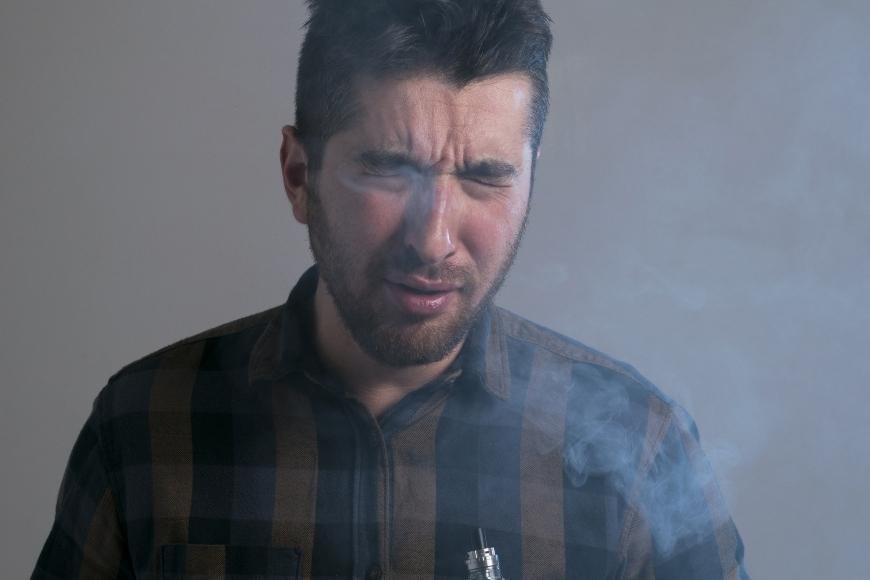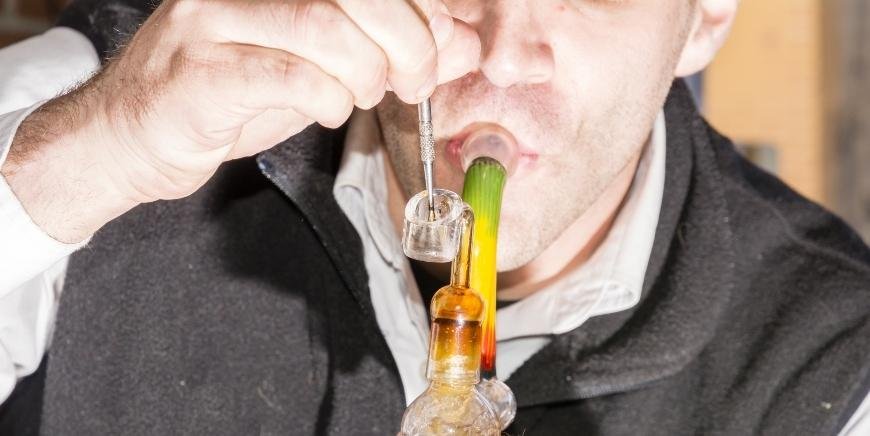Dabbing Vs Vaping: Which is Better?
Explore "Dabbing Vs Vaping: Which is Better?" in our guide comparing health, efficiency, cost & portability for cannabis users.

As cannabis consumption methods continue to evolve, the debate surrounding "Dabbing Vs Vaping: Which is Better?" becomes increasingly relevant for both experienced users and newcomers alike. This blog post seeks to compare dabbing and vaping from various angles, such as health considerations, efficiency, cost analysis and portability.
We will start by discussing the basics of dabbing and vaping before delving into their respective advantages and drawbacks. By understanding the key differences between using dab rigs or vape pens for consuming cannabis concentrates, you can make informed decisions that cater to your preferences and needs.
Ultimately, our goal is to help you navigate the world of cannabis consumption with confidence by providing a comprehensive guide on "Dabbing Vs Vaping: Which is Better?". So read on as we explore this fascinating topic together.
Table of Contents:
- Dabbing Basics
- Vaping Basics
- Efficiency Comparison
- Cost Analysis
- Portability Evaluation
- Informed Decisions
- FAQs in Relation to Dabbing vs Vaping: Which is Better?
- Conclusion
Dabbing Basics
For those looking to take their cannabis consumption to the next level, dabbing involves heating concentrated extracts (dabs) on a hot surface and inhaling the resulting vapor. This process requires specific equipment such as:
- Dab rig: A specialized water pipe designed for dabbing.
- Nail or banger: The part of the rig where you place your concentrate, typically made from materials like quartz, ceramic, or titanium.
- Torch: Used to heat up the nail or banger to an optimal temperature for vaporization.
- Dabber tool: A utensil used to scoop and apply concentrates onto the heated nail/banger.
The appeal of dabbing and dab pens lies in their ability to deliver potent doses of cannabinoids quickly and efficiently. Concentrates are incredibly powerful forms of cannabis, with much higher levels of THC than flower-based products. As a result, users often experience more intense effects with smaller amounts consumed. However, it's essential for beginners to not only familiarize themselves with proper techniques but also start with low dosages due to this increased potency.
In recent years, various types of concentrates have become increasingly popular among enthusiasts seeking alternative methods beyond smoking joints or using pipes. Some common forms include shatter, wax, crumble, and rosin. Each type has unique characteristics regarding texture and consistency; however, all share the common trait of high cannabinoid content.

Vaping Basics
Unlike dabbing, vaping concentrates and dried herb involves heating cannabis or other substances to a temperature that produces vapor without combustion. This process can be achieved using various types of devices, such as portable vaporizers, vape pens, and desktop units.
There are three main categories of vaping materials:
- E-liquids: Also known as vape juice or e-juice, these liquids contain propylene glycol (PG), vegetable glycerin (VG), flavorings, and often nicotine or cannabinoids like CBD or THC.
- Dry herb: Ground cannabis flowers are used in dry herb vaporizers for a more traditional experience similar to smoking but with less harmful byproducts.
- Concentrates: Similar to dabbing, some vapes allow the use of wax, shatter, crumble and other concentrated forms of cannabis extracts for increased potency.
The choice between these options depends on personal preferences and priorities. For instance, CBD e-liquids offer potential health benefits without psychoactive effects while THC concentrates provide stronger experiences for recreational users.
Vape Devices & Accessories
A multitude of vaping gadgets are obtainable these days, tailored to varied demands and spending plans. Some popular options include:
- All-in-one Vapes: Suitable for beginners due to their simplicity; they come with built-in batteries and tanks requiring minimal setup effort.
- Box Mods: These customizable devices allow users to adjust temperature settings, wattage output, and other features for a personalized vaping experience.
- Vape Pens: Sleek and portable, vape pens are ideal for discreet use on-the-go; they typically work with e-liquids or concentrates.
In addition to the device itself, various accessories such as coils, tanks, and mouthpieces can enhance the overall vaping experience.
Health Considerations
Considering health effects, temperature must be taken into account when dabbing or vaping. One major concern is the temperature at which these methods operate. Studies have shown that high-temperature dabbing can produce harmful byproducts, such as toxicants and carcinogens.
In contrast, vaping typically uses lower temperatures, reducing the risk of inhaling dangerous compounds. Moreover, many vape devices come with adjustable temperature settings for a more controlled experience. However, it's essential to use high-quality vaporizers designed for cannabis consumption to ensure safety.
- Dabbing: High-temperature dabbing may expose users to hazardous substances like benzene or acetaldehyde.
- Vaping: Lower temperatures reduce exposure risks but require proper equipment and materials.
Besides temperature concerns, another aspect worth considering is the type of substance being consumed. Dabbing involves concentrated extracts like wax or shatter that contain higher levels of cannabinoids compared to dry herb or e-liquids used in vaping. While this might seem appealing due to increased potency, excessive consumption could lead to adverse side effects such as paranoia or anxiety.
To minimize potential health risks associated with both methods:
- Maintain moderate usage patterns;
- Select quality products from reputable sources;
- Use only approved devices specifically designed for cannabis consumption.
Efficiency Comparison
When it comes to cannabinoid delivery and overall experience, both dabbing and vaping have their advantages. Nevertheless, each method has its own advantages and disadvantages that should be considered when deciding which is the best for you.
Dosage Control
In terms of dosage control, vaping offers greater precision, as most devices allow users to adjust the temperature settings and select the desired amount of vapor production. This makes it easier to consume a consistent dose each time. Dabbing, on the other hand, can be more challenging due to its manual nature; controlling the size of your concentrate portion and heating process requires practice.
Potency & Effects
Dabbing typically involves consuming highly concentrated extracts like wax or shatter, resulting in a more potent high compared to vaping dry herb or e-liquids containing cannabinoids such as CBD or THC. For those seeking stronger effects from their cannabis consumption, dabbing might be preferable over vaping.
Cannabinoid Delivery Efficiency
- Vaping: Studies suggest that vaporizing cannabis at lower temperatures allows for better extraction of cannabinoids with minimal degradation. Additionally, since combustion does not occur during vaping (unlike smoking), fewer harmful byproducts are produced.
- Dabbing: While dab rigs heat concentrates at higher temperatures than vape devices (potentially leading to some cannabinoid degradation), the consumption of concentrated extracts can still result in a more efficient delivery of cannabinoids compared to vaping e-liquids or dry herb.
Cost Analysis
When it comes to selecting between dabbing and vaping, cost is a factor of significance. In this section, we will compare the initial investment, ongoing expenses, and overall cost-effectiveness of both methods.
Initial Investment
Dabbing: The price of a dab rig, torch, nail, or banger can vary greatly depending on the quality and design. A basic setup may start at around $50 but can easily exceed $200 for more intricate designs.
Vaping: Vape devices also have a wide range of prices. You can find affordable vape pens starting at $20 while high-end vaporizers like the Volcano Vaporizer can reach up to $600.
Ongoing Expenses
- Dabbing: Concentrates are typically more expensive than dry herb or e-liquids due to their higher potency. Additionally, you'll need replacement nails/bangers over time as they wear out from regular use.
- Vaping: E-liquids or dry herbs are generally cheaper compared to concentrates; however, some vapes require replaceable coils that add extra costs over time.
Cost-effectiveness Over Time
The long-term value of dabbing versus vaping depends on factors such as frequency of use and personal preferences regarding potency levels. While dabbing may provide stronger effects with less material used (due to its concentrated nature), it might not be as cost-effective if you prefer lower doses or if you consume cannabis less frequently. Vaping may be a more economical option for those who want milder effects and have less tolerance.
Portability Evaluation
When assessing the portability of dabbing and vaping, several aspects must be taken into account for an optimal experience. The convenience and mobility offered by each method can significantly impact your overall experience, especially if you prefer consuming cannabis on-the-go.
Dabbing Portability
Dab rigs tend to be bulkier than vape devices, making them less portable. They often require additional accessories such as a torch for heating the nail or banger, which adds extra weight and complexity when transporting your setup. Moreover, dab rigs need a stable surface for use, limiting their practicality in outdoor settings or while traveling.
Vaping Portability
In contrast, vaping devices offer greater portability due to their compact size and lightweight design. Many portable vaporizers feature rechargeable batteries that eliminate the need for external heat sources like torches used in dabbing setups. Additionally, some vape pens come with pre-filled cartridges containing concentrates or e-liquids that simplify usage even further.
- Compact Size: Vape devices are generally smaller than dab rigs; they easily fit into pockets or bags without taking up much space.
- Battery Life: Rechargeable batteries in vape devices allow users to enjoy extended sessions without worrying about finding an external power source.
- Discreet Usage: Vaping produces less visible vapor compared to smoking dabs from a rig; this makes it easier for users who want discretion during consumption.
Overall, vaping devices provide a more portable and convenient option for cannabis consumption compared to dabbing setups. However, it's essential to consider your personal preferences and priorities when choosing the most suitable method for you.

Informed Decisions
To make the best decision, consider both the advantages and disadvantages of each option. Some factors to keep in mind include:
- Health effects: If health concerns are a priority for you, vaping may be a better option due to its lower temperatures and reduced risk of harmful byproducts compared to high-temperature dabbing.
- Efficiency: Dabbing is known for delivering potent hits with concentrated extracts, while vaping offers precise dosage control using e-liquids or dry herb. Consider which aspect is more important for your desired experience.
- Cost: Analyze the initial investment required for dab rigs or vape devices as well as ongoing expenses such as concentrates or e-liquids. Determine if either method aligns with your budgetary constraints.
- Portability: Vaping devices generally offer greater portability due to their compact size and discreet usage options, whereas dab setups tend to be bulkier and less mobile-friendly. Assess how often you'll need on-the-go access when making a choice.
Considering your own needs and preferences is key to determining the best consumption method for you. Remember that there's no one-size-fits-all solution; what works best for someone else might not necessarily work best for you.
FAQs in Relation to Dabbing vs Vaping: Which is Better?
Is Vaping or Dabbing Healthier?
Vaping is generally considered to be healthier than dabbing, as it involves heating the cannabis concentrate at a lower temperature. This reduces the production of harmful byproducts and allows for a smoother inhalation experience. However, both methods have their risks and should be used responsibly.
Is Vape or Dab Worse?
It depends on personal preferences and usage habits. Vape pens offer more control over temperature settings, reducing potential harm from high-temperature combustion. Dabbing can produce more potent effects but may also expose users to higher levels of toxins if not done correctly.
Is Dabbing More Potent than Vaping?
Yes, dabbing tends to be more potent than vaping due to its higher concentration of THC in cannabis concentrates like wax or shatter. Users typically consume larger amounts in one session compared to vaporizing dry herb or oil cartridges, resulting in stronger effects.
Why Dab Instead of Vape?
Some people prefer dabbing because it provides faster onset and stronger effects compared to vaping. Additionally, dabs often deliver better flavor profiles due to the terpenes present in cannabis concentrates. However, this method requires specialized equipment and has a steeper learning curve for proper use.
Conclusion
After analyzing the basics of dabbing and vaping, considering health implications, evaluating efficiency and cost, as well as portability factors, it is clear that both methods have their pros and cons. While dabbing offers a stronger high with less product used, vaping provides a more discreet experience with fewer health risks.
Ultimately, the decision between dabbing and vaping comes down to personal preference and priorities. Making educated choices when consuming drugs is essential to reduce risk and increase satisfaction.






































































































































